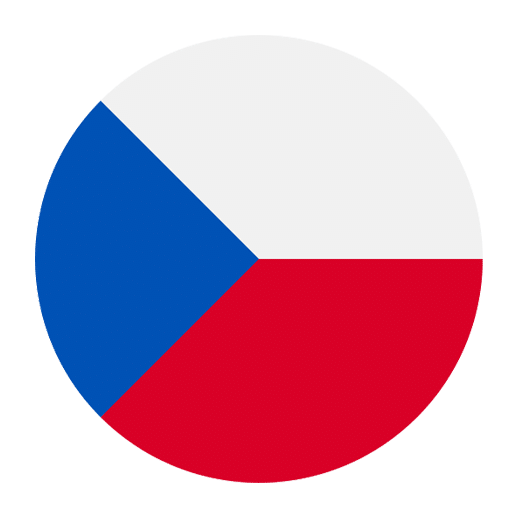Learning a new language can be an exciting yet challenging endeavor. When it comes to Czech, a Slavic language with rich history and unique grammatical structures, understanding the nuances of verbs is crucial for effective communication. In this article, we will delve into the difference between “mám” and “máme“, which translate to “I have” and “we have” in English, respectively. These two forms are essential for expressing possession and are fundamental for constructing meaningful sentences in Czech.
Understanding Czech Verb Conjugation
Before we dive into the specifics of “mám” and “máme“, it’s important to grasp the basics of Czech verb conjugation. Czech verbs conjugate based on the subject pronoun, and this conjugation changes the verb’s ending to reflect who is performing the action.
For instance, the verb “mít” means “to have.” When conjugated, the verb changes according to the subject:
– Já mám – I have
– Ty máš – You (singular informal) have
– On/ona/ono má – He/she/it has
– My máme – We have
– Vy máte – You (plural or formal singular) have
– Oni/ony/ona mají – They have
As you can see, “mám” is the first-person singular form, and “máme” is the first-person plural form.
Mám – I Have
The word “mám” is used when the speaker is referring to themselves in the first person. This form is essential for expressing what you personally possess or have. Here are some examples to illustrate its use:
1. Mám auto. – I have a car.
2. Mám dobrou náladu. – I am in a good mood (literally: I have a good mood).
3. Mám hodně práce. – I have a lot of work.
In each of these sentences, the speaker is talking about something they possess or a state they are in. The verb “mám” directly connects the subject to the object, indicating ownership or possession.
Using Mám in Questions
To ask questions involving “mám“, you simply place the verb at the beginning of the sentence:
1. Mám čas? – Do I have time?
2. Mám přijít? – Should I come?
3. Mám peníze? – Do I have money?
These questions are straightforward and follow the typical structure of Czech interrogative sentences.
Common Expressions with Mám
There are several common expressions in Czech that use “mám“:
1. Mám hlad. – I am hungry (literally: I have hunger).
2. Mám strach. – I am scared (literally: I have fear).
3. Mám rád/a… – I like… (literally: I have a liking for…).
These expressions are idiomatic and essential for everyday conversation.
Máme – We Have
The word “máme” is used when the speaker is referring to a group that includes themselves. This first-person plural form is crucial for expressing what a group of people, including the speaker, possess or have. Here are some examples:
1. Máme auto. – We have a car.
2. Máme dobrou náladu. – We are in a good mood (literally: We have a good mood).
3. Máme hodně práce. – We have a lot of work.
In these sentences, the possession or state is shared among the group, and the verb “máme” links the subject to the object collectively.
Using Máme in Questions
Similar to the singular form, to ask questions with “máme“, you place the verb at the beginning of the sentence:
1. Máme čas? – Do we have time?
2. Máme přijít? – Should we come?
3. Máme peníze? – Do we have money?
These questions help inquiring about collective possessions or actions.
Common Expressions with Máme
There are also common expressions in Czech that use “máme“:
1. Máme hlad. – We are hungry (literally: We have hunger).
2. Máme strach. – We are scared (literally: We have fear).
3. Máme rádi… – We like… (literally: We have a liking for…).
These expressions are used to convey collective emotions or states and are fundamental for group conversations.
Contextual Differences
Understanding the contextual differences between “mám” and “máme” can enhance your fluency and comprehension in Czech. The primary difference lies in the subject performing the action. “Mám” is for individual possession, while “máme” is for collective possession.
Consider the following scenarios to understand the contextual application:
1. If you are talking about your personal belongings, you would use “mám“:
– Mám klíče. – I have the keys.
2. If you are talking about something that you and your friends possess together, you would use “máme“:
– Máme klíče. – We have the keys.
By correctly using these forms, you provide clear information about who possesses what, thereby avoiding misunderstandings.
Practice Exercises
To solidify your understanding of “mám” and “máme“, here are some practice exercises. Try translating the following sentences into Czech:
1. I have a book.
2. We have a house.
3. Do I have to go?
4. We are happy.
5. I like ice cream.
6. We are tired.
Answers:
1. Mám knihu.
2. Máme dům.
3. Mám jít?
4. Máme radost.
5. Mám rád/a zmrzlinu.
6. Máme unavení.
Conclusion
Understanding and correctly using “mám” and “máme” is crucial for expressing possession in Czech. These forms reflect whether you are speaking about yourself or a group that includes you. By mastering these conjugations, you can more effectively communicate your thoughts and needs in Czech.
Remember, language learning is a gradual process, and practice is key. Keep using these forms in different contexts to become more comfortable with them. Happy learning!

